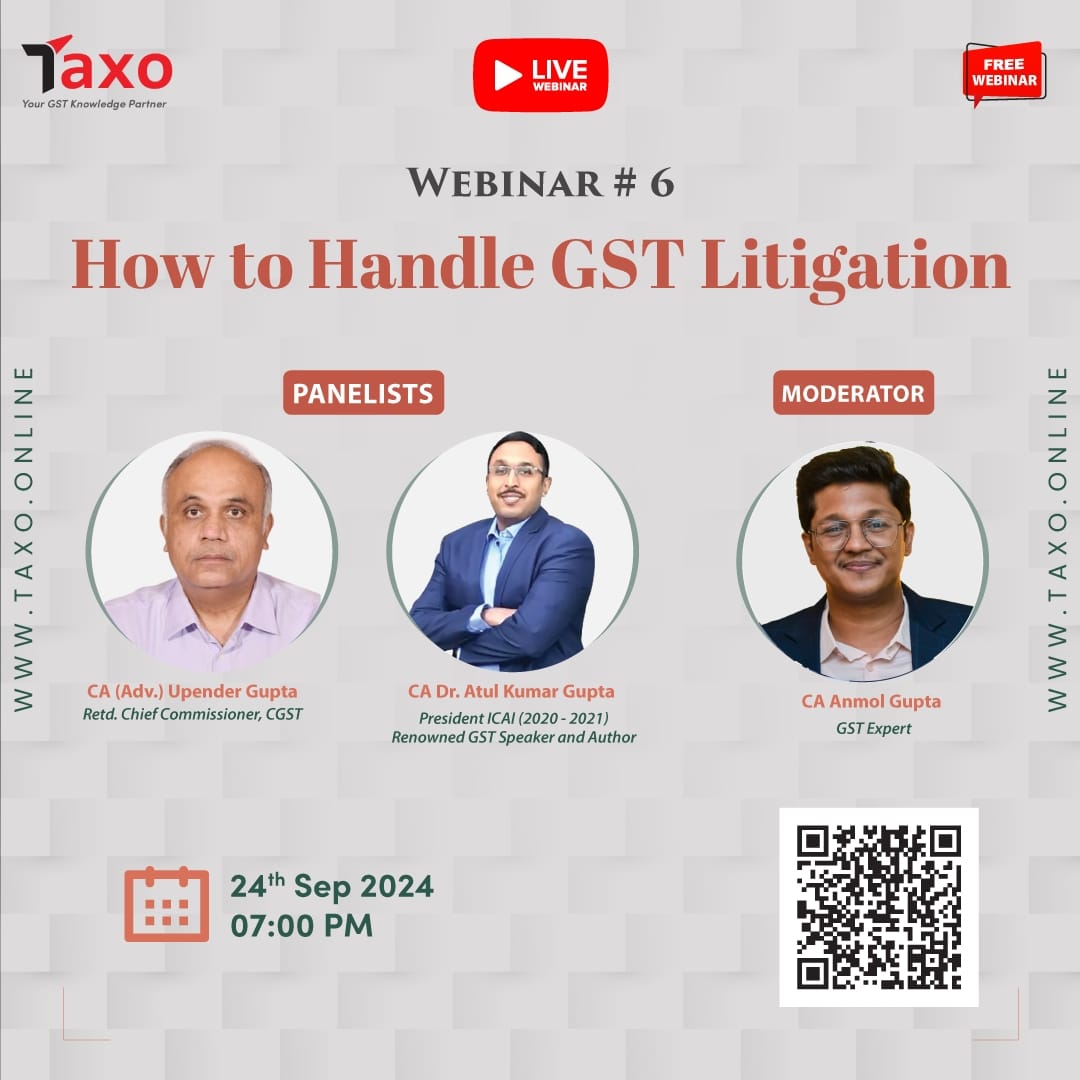Its five years when Goods and Service Tax was introduced in India on 1st July 2017 and here is the time to take stock and develop the way forward. To harness the opportunity created by GST and suggest to address the bottlenecks, TAXO GST 360 – A Next generation solutions for GST organised Annual Conference with title, “Unravelling 5 Years of GST – Unlocking India’s Potential” at New Delhi participated by Policy makers, Professionals and Colleagues from Industry. Apart from Various technical aspects were discussed, the conference appreciated various impetus given by GST to growth of Indian Economy.
GST Facilitated
One Nation – One Tax, where in the various Central and State level taxes subsumed into a single tax across states unlike earlier when different states have different definition of similar activity and procedure to comply with. This reduces the compliance cost and litigation and facilitate movement of goods without need of forms and process.
Removing Cascading effects, which facilitate not only reduction in cost of capital but also make Indian product more competitive in domestic and international trade.
Reduce Complexities through a single classification of activity as supply rather on litigation related to nature of activity into manufacturing or job Work, Goods or Services or works contract and so on.
Smooth Flow of Credit across activity, unlike earlier regime where credit of Excise was not available for state VAT and vice-se-versa, GST regime facilitated the credit across activity which also reduce the cost of production and services and make things more competitive.
At the same time, industry and professionals also deliberated that how the things can be more dynamic, the suggestions include;
Suggestions for way forward in GST
Centralised Compliance facilitation and Assessment – it was being discussed that in the present regime of GST, assessee present in multi states need to comply state-based filing of return and other compliances, which later on will also invite state-based assessment and interpretation of various border line issues in GST. To address this issue, a way forward should be developed where like earlier regime, at least for large taxpayer units, a centralised filing of return carrying details of state-based business should be explored. This will facilitate centralised assessment which will reduce litigations as well.
Stability in Policy Making – it is also being discussed and suggested that the frequent changes in policy though at time necessary, still at times make certain decision un-viable. To illustrate, at times you have contracts inclusive of taxes; especially government contracts, where in the profit margin get evaporated if the rates increased; say from 12% to 18%.
Minimum Slabs for reduce complexity around classification – Looking into the larger MSME base In India which is important source of contribution in GDP and employment generation, it is important that slabs are merged to reduce complexity around classifications. At times, classification to 4 digit to 8 digit, it is mis-interpret at the assessee or field formation level and business become un-viable to sustain.
Master Circular for Amendments – Being GST a new tax regime, it is obvious that many notifications and circulars are getting issued, which is difficult specially for small assessee to remain updated. It is being suggested that like Reserve bank of India, GST Council should also issue a master circular to capture all circulars/notifications issued at centre and state level for better eco-system around GST.
Un-interrupted flow of Credit – It is being pointed out that in present regime of GST there are three important challenges related to Input Credit
- Credits are Blocked in-spite the same are means for output liability. To illustrate under Section 17(5) credit of Constructions is blocked even the building is mean for rendering output supply like renting. Similarly, credit of rent a cab, insurance which are essential for business are blocked.
- Credit is available only if supplier paid the GST – is a situation when assessee has to ensure that supplier paid the tax to government whereas apart from time lag between the credit to claim and payment by supplier, there is window to check that compliance other than GSTR 1 data which do not give that assurance. This land the assessee in un-chartered territory of uncertainty and finance team lives in regime of uncertainty.
- Credit of Capital Goods attracts Interest due to Rule 43 – It is being suggested that claiming credit at times cost more than the value of credit as assessee has to pay compulsory interest on reversal of credit pertain to exempted operations. In case the value of exempted in more than the taxable, interest cost more than credit. Assessee should have option to claim initially only the portion, he is eligible for to reduce cost of Interest.
- Mandatory Reverse Charge interrupt credit chain as the supply falling under reverse charge classified as exempted under Section 17(3) which means no input credit can be used related to that activity for the supplier, even if substantial GST paid in procurement of various services like renting of office.
Absence of GST Tribunal which increase the chance of uncertainty because of Advance Ruling and cost of litigation also being deliberated apart from Applicability of GST on next Generation Business like Digital Assets, Online Information etc was also being discussed to travel along with international development
Team TAXO, explain that how the eco-friendly system developed which carry 1000+ illustration, case studies and real time updated solution support the professionals, students and MSME units to better understand the law and compliances for a 5Trillion USD economy with lots of skill-based employment opportunities.
To read more subscribe today: www.taxo.online



